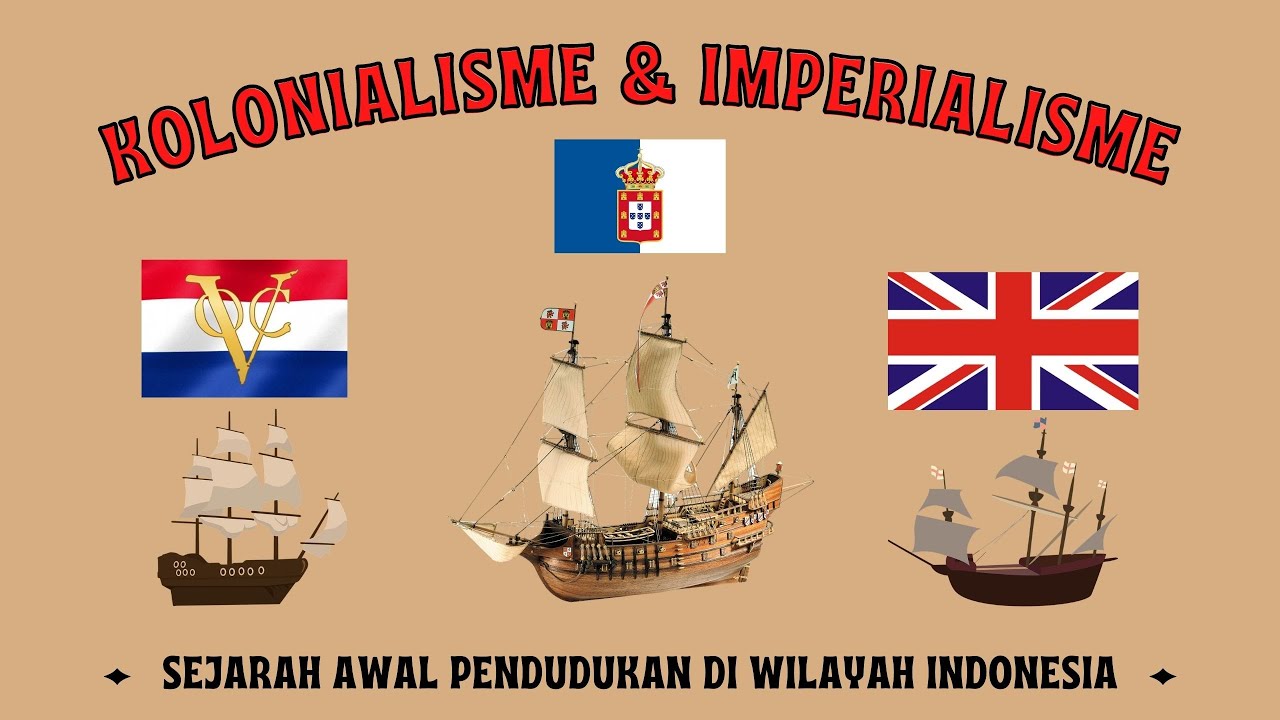MATATAG AP7 Q2 W3 Ang Imperyalismong Kanluranin sa Pangkapuluang TSA with PPT Link
Summary
TLDRThis script explores the history of Western colonialism and imperialism in Southeast Asia, focusing on the Philippines, Indonesia, and Malaysia. It covers the pre-colonial conditions of these countries, the methods used by European powers like Spain, Portugal, the Netherlands, and England to establish control, and the policies they implemented. Topics include the spread of Christianity, trade monopolies, forced labor, and the cultivation of cash crops. The script also compares the distinct experiences of each country under colonial rule, providing insights into the long-lasting impacts of Western domination on the region’s political, economic, and cultural development.
Takeaways
- 😀 Western colonialism and imperialism significantly shaped Southeast Asia, affecting countries like the Philippines, Indonesia, and Malaysia.
- 😀 Colonizers sought control over valuable resources like gold, spices, and trade routes, often using military power and alliances with local rulers.
- 😀 Spain's colonization of the Philippines involved religious conversion to Christianity, forced labor systems (Polo y Servicio), and economic policies like the tribute and monopoly systems.
- 😀 The Manila-Acapulco Galleon Trade was a key economic policy for Spain, fostering trade but also leading to negative consequences like neglect of local farming.
- 😀 The Dutch East India Company (VOC) controlled Indonesia's spice trade, using military force and trade monopolies to secure dominance in the region.
- 😀 The Dutch imposed the Cultivation System in Indonesia, forcing local farmers to dedicate land to export crops, leading to widespread hardship and exploitation.
- 😀 Portugal, the Netherlands, and England all had varying levels of control over Malaysia, with the British taking prominence through the purchase of Penang and the use of force and agreements.
- 😀 Malaysia's economy was heavily influenced by British policies, focusing on the cultivation of rubber and tin, often relying on imported Chinese laborers.
- 😀 Indigenous governance systems in the Philippines (barangays and Sultanates), Indonesia (kingdoms), and Malaysia (Islamic states) were disrupted by colonial control.
- 😀 Colonization led to significant cultural, economic, and political changes in Southeast Asia, with long-lasting impacts on the region's social fabric and development.
Q & A
What were the main factors that led to the Western colonization of Southeast Asia?
-The main factors for Western colonization included the pursuit of wealth through trade, especially the spice trade and gold; the spread of Christianity; and the desire for political power and territorial expansion.
How did the arrival of Western powers impact the governance systems in Southeast Asia?
-Western powers, such as the Spanish, Dutch, and British, dismantled local governance structures like barangays and sultanates. They replaced these systems with centralized colonial governments and imposed European political models.
What was the role of the Spanish in the colonization of the Philippines?
-The Spanish, led by Ferdinand Magellan in 1521 and later by Miguel Lopez de Legazpi in 1565, used both military conquest and diplomatic alliances, like the 'sanduguan' or blood compact, to colonize the Philippines. They introduced Christianity, central governance, and a tribute system.
What was the significance of the Manila-Acapulco trade route?
-The Manila-Acapulco trade route, also known as the 'Galleon Trade,' was a vital link between the Philippines and Mexico, facilitating the exchange of goods such as silver, silk, and spices. It also led to the economic integration of the Philippines into the Spanish Empire.
What were the key colonial policies implemented by the Dutch in Indonesia?
-The Dutch implemented the Cultivation System, which forced Indonesian farmers to dedicate part of their land to export crops like coffee and sugar, often at the expense of local food production. The Dutch also monopolized trade, especially in spices, and spread Christianity.
How did forced labor systems like Polo y Servicio impact the Philippines?
-Under the Polo y Servicio system, Filipino men aged 16-60 were forced into labor for public projects. This led to significant social and economic hardship, as many were separated from their families and forced to work under harsh conditions.
How did the British influence the culture and economy of Malaysia during their colonial rule?
-The British controlled key resources like rubber and tin, leading to the establishment of plantations and mines. They also encouraged Chinese migration to work in these sectors. However, they did not heavily impose British culture on Malaysians, allowing local traditions to persist.
What was the 'White Man's Burden' in the context of colonialism?
-The 'White Man's Burden' was a paternalistic idea that justified European colonialism by claiming it was the duty of Western powers to civilize and bring Christianity to non-Western societies, including those in Southeast Asia.
How did the spread of Christianity affect the local cultures in Southeast Asia?
-Christianity significantly altered local cultures, particularly in the Philippines, where the Catholic Church gained immense power. Many indigenous religious practices were suppressed, and local languages were often replaced by Spanish or other European languages.
What were the economic effects of colonial monopolies in Southeast Asia?
-Colonial monopolies controlled trade and restricted local economic development. In the Philippines, Spain controlled the tobacco trade; in Indonesia, the Dutch controlled the spice trade. These monopolies often led to exploitation of local populations and limited access to goods for local markets.
Outlines

此内容仅限付费用户访问。 请升级后访问。
立即升级Mindmap

此内容仅限付费用户访问。 请升级后访问。
立即升级Keywords

此内容仅限付费用户访问。 请升级后访问。
立即升级Highlights

此内容仅限付费用户访问。 请升级后访问。
立即升级Transcripts

此内容仅限付费用户访问。 请升级后访问。
立即升级浏览更多相关视频

Ang Kolonyalismo at Imperyalismong Kanluranin sa Pangkapuluang Timog Silangang Asya Q2 W3-4 (Part2)

SEJARAH KOLONIALISME & IMPERIALISME DI INDONESIA

Ang Kolonyalismo at Imperyalismong Kanluranin sa Pangkapuluang Timog Silangang Asya Q2 W3-4 (Part 1)

SEJARAH KOLONIALISME & IMPERIALISME DI INDONESIA

INI ALASAN BANGSA EROPA MENJAJAH

The History of "Ganyang Malaysia" Part 2 | The Confrontation Ends
5.0 / 5 (0 votes)
